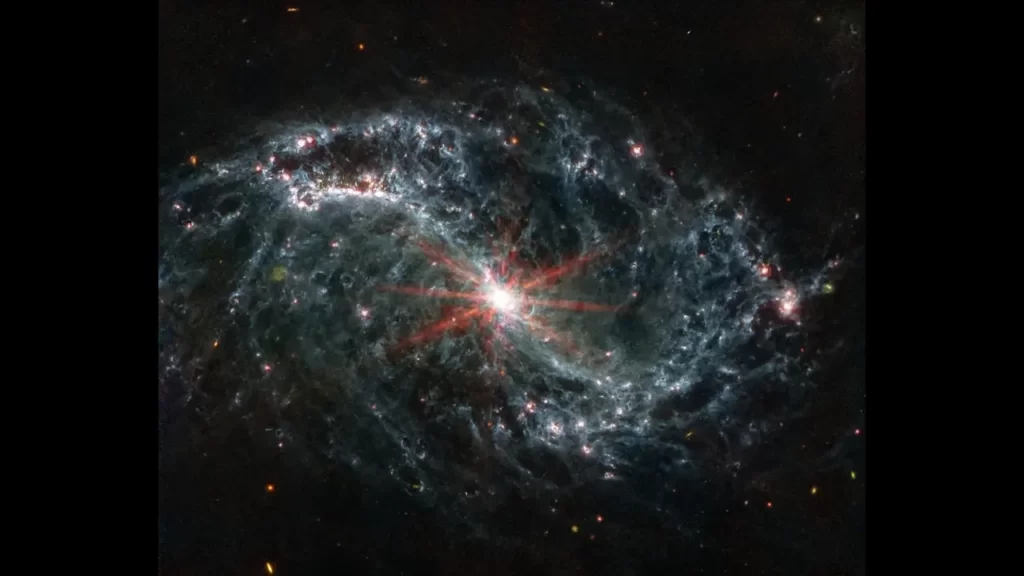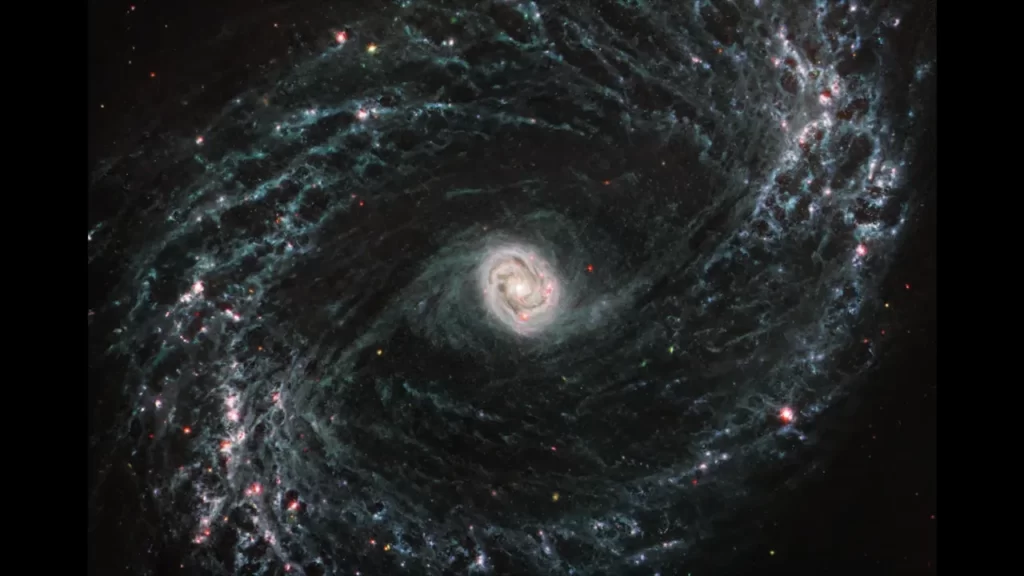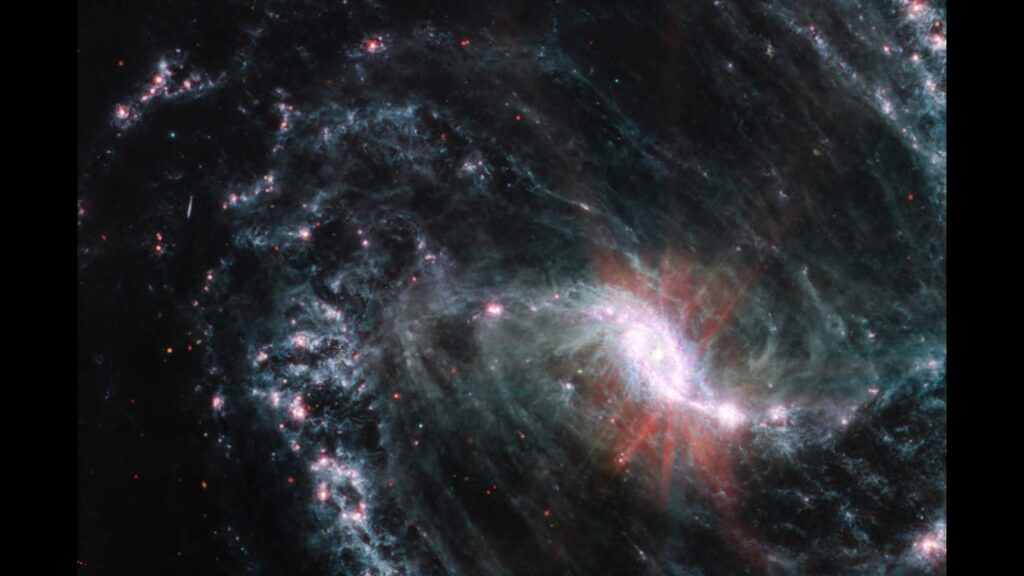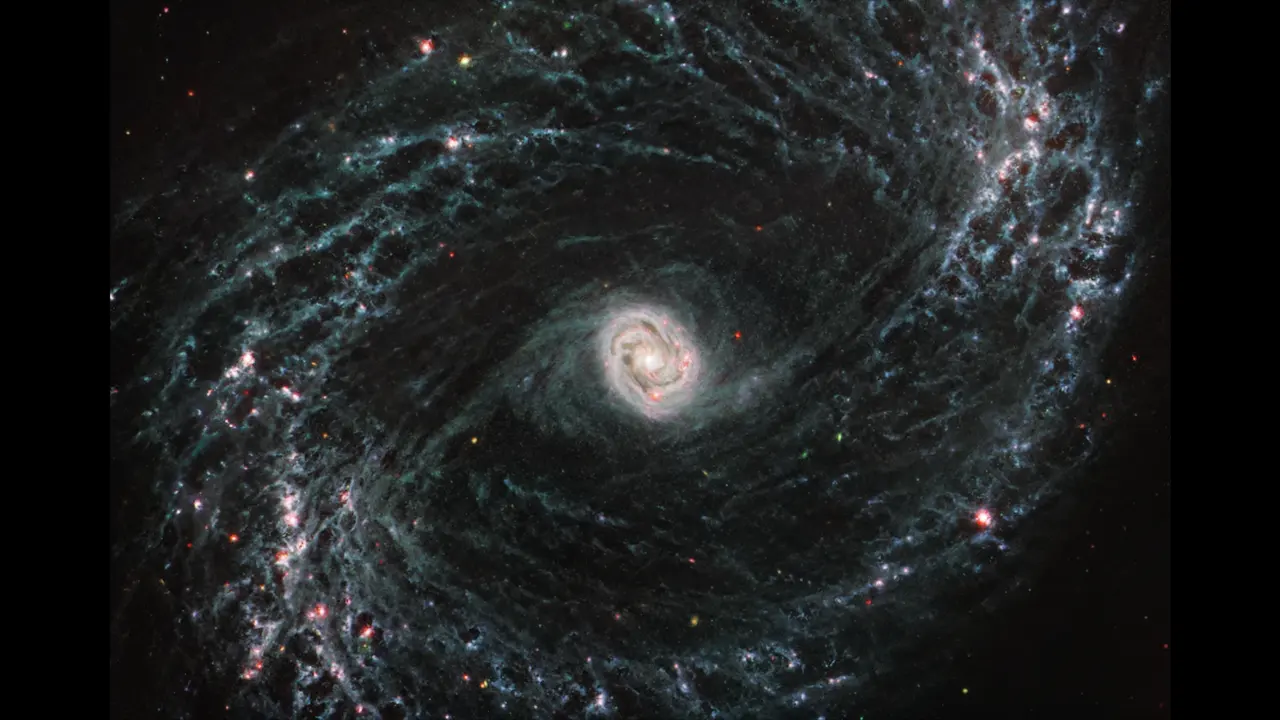NASA’s James Webb Space Telescope has captured stunning images of nearby galaxies, revealing intricate networks of gas and dust. The telescope has been able to peer through the dust and reveal the hidden structures within these galaxies, offering new insights into how stars and galaxies form and evolve.

Introduction to NASA’s Webb Telescope and its capabilities
NASA’s James Webb Space Telescope is a large, infrared-optimized space observatory that was launched in December 2021. It is the successor to the Hubble Space Telescope and is designed to explore some of the most fundamental questions in astrophysics, ranging from the formation of the first galaxies to the search for life on other planets.
The Webb Telescope is particularly well-suited for studying the gas and dust content of galaxies, as it can detect the faint infrared radiation emitted by these objects. This allows astronomers to probe the deep, hidden regions of galaxies that are obscured by dust and gas, providing a clearer picture of their structure and evolution.
The discovery of intricate networks of gas and dust in nearby galaxies
The intricate networks of gas and dust that have been revealed by the Webb telescope are an exciting discovery for astronomers. The Webb telescope is a powerful tool for observing the universe, and this discovery is just one of the many exciting findings that it has made. The intricate networks of gas and dust that have been revealed are crucial to understanding the formation and evolution of galaxies.
These networks are the result of the complex interplay between stars, gas, and dust. Stars are born from clouds of gas and dust, and as they evolve, they release energy and matter back into the interstellar medium. This material then goes on to form new stars and other structures.

The Webb telescope’s ability to observe these intricate networks in great detail is an important breakthrough. With this new understanding, astronomers can more accurately model the formation and evolution of galaxies. This can help us better understand the universe as a whole and our place in it.
Furthermore, these intricate networks may also hold clues to the presence of life in other parts of the universe. The building blocks of life, such as carbon and nitrogen, are often found in these networks. By studying these networks, we may be able to learn more about the conditions necessary for life to form, both on Earth and in other parts of the cosmos.

The implications of these discoveries for our understanding of galaxy evolution
The discovery of intricate networks of gas and dust in nearby galaxies has significant implications for our understanding of galaxy evolution. By studying the structure and composition of these filaments, astronomers can gain insights into the physical processes that drive the formation of new stars.
The Webb Telescope’s observations suggest that star formation is a complex, multi-step process that involves the gravitational collapse of gas clouds, the fragmentation of these clouds into smaller clumps, and the eventual formation of protostars. Understanding these processes is crucial for understanding how galaxies form and evolve over time.
Additionally, the Webb Telescope’s observations of the gas and dust content of galaxies that are not actively forming stars can help us understand the mechanisms that regulate star formation over the long term. The complex structures observed in these galaxies suggest that gas and dust may be redistributed over time by processes such as supernovae, mergers, and galactic winds. By studying these processes, astronomers can gain insights into the evolution of galaxies over cosmic time scales.
The future of Webb Telescope observations
The discovery of intricate networks of gas and dust in nearby galaxies is just the beginning of what promises to be a long and productive mission for the Webb Telescope. In the coming years, astronomers will continue to use the telescope to explore the deepest regions of space, probing the mysteries of galaxy formation and evolution, the search for habitable planets, and the origins of the universe itself. With its advanced capabilities and unparalleled sensitivity, the Webb Telescope is poised to revolutionize our understanding of the cosmos and our place within it.
In summary, NASA’s James Webb Space Telescope has provided unprecedented views of nearby galaxies, revealing intricate networks of gas and dust that offer new insights into how stars and galaxies form and evolve.
Its advanced capabilities have allowed scientists to study the universe in ways that were previously impossible, providing a better understanding of the properties of gas and dust, the process of star formation, and the formation and evolution of galaxies.
